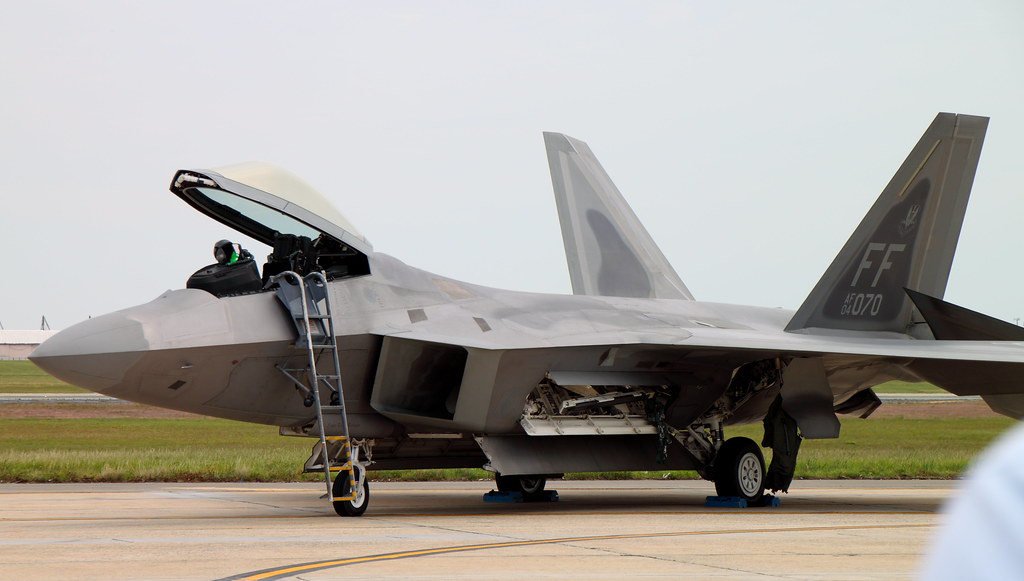
The allure of military surplus gear has always held a powerful fascination for civilians, and for excellent reasons. This equipment isn’t just designed; it’s engineered to withstand conditions that would unequivocally destroy regular consumer products in mere minutes. Whether your passions lie in the rigors of camping, emergency preparedness, or simply an appreciation for exceptionally well-made gear that promises to endure, military surplus presents incredible options genuinely within reach.
From robust clothing built to shrug off the most extreme weather to specialized tools crafted for life-or-death situations, surplus gear brings military-grade durability directly into everyday civilian life. These items embody a philosophy where failure is simply not an option. Every component is tested under conditions that make typical manufacturers blanch, ensuring reliability when it matters most.
This in-depth article will guide you through 16 exceptional military surplus items that civilians can legally purchase and integrate effectively. We will explore how these battle-tested assets, originally designed for the armed forces, translate into superior performance and longevity for civilian applications. Prepare to discover gear that’s not just built differently, but crafted to outlast, outperform, and offer unparalleled value.

1. **Night Vision Goggles**: Entering a world unseen by the eye, civilian-legal night vision goggles open new possibilities after dusk. These sophisticated optical devices amplify ambient light, allowing users to perceive surroundings in near-total darkness, transforming nocturnal environments. While not cutting-edge, their capabilities are profoundly impressive and highly functional for civilian use.
The financial investment for these remarkable devices typically spans from a few hundred dollars for basic models to several thousand for higher-generation units with enhanced clarity. Cost is dictated by the technology’s “generation” and the unit’s overall condition. Despite varying price points, they consistently offer a significant advantage over conventional human vision in low-light scenarios.
Practical applications for night vision goggles are extensive. Hunters find them indispensable for tracking game after sunset, offering a crucial tactical advantage and safer navigation. Security professionals integrate these goggles into property surveillance routines, enabling discrete and effective monitoring during the darkest hours, bolstering overall safety and situational awareness.
Military equipment: Night-vision device
Categories: All articles with unsourced statements, Armoured fighting vehicle vision and sighting equipment, Articles containing Russian-language text, Articles to be expanded from October 2021, Articles with short description
Summary: A night-vision device (NVD), also known as a night optical/observation device (NOD) or night-vision goggle (NVG), is an optoelectronic device that allows visualization of images in low levels of light, improving the user’s night vision.
The device enhances ambient visible light and converts near-infrared light into visible light which can then be seen by humans; this is known as I2 (image intensification). By comparison, viewing of infrared thermal radiation is referred to as thermal imaging and operates in a different section of the infrared spectrum.
A night vision device usually consists of an image intensifier tube, a protective housing, and an optional mounting system. Many NVDs also include a protective sacrificial lens, mounted over the front/objective lens to prevent damage by environmental hazards, while some incorporate telescopic lenses. An NVD image is typically monochrome green, as green was considered to be the easiest color to see for prolonged periods in the dark. Night vision devices may be passive, relying solely on ambient light, or may be active, using an IR (infrared) illuminator.
Night vision devices may be handheld or attach to helmets. When used with firearms, an IR laser sight is often mounted to the weapon. The laser sight produces an infrared beam that is visible only through an NVD and aids with aiming. Some night vision devices are made to be mounted to firearms. These can be used in conjunction with weapon sights or standalone; some thermal weapon sights have been designed to provide similar capabilities.
These devices were first used for night combat in World War II and came into wide use during the Vietnam War. The technology has evolved since then, involving “generations” of night-vision equipment with performance increases and price reductions. Consequently, though they are commonly used by military and law enforcement agencies, night vision devices are available to civilian users for applications including aviation, driving, and demining.
Get more information about: Night-vision device
Read more about: Unveiling the Shadow Warriors: Inside the Secret World of Navy SEALs and Their Unmatched Legacy

2. **Field Radios**: For communication needs demanding more than standard consumer electronics, military field radios are in a class of their own. These incredibly rugged and powerful units boast capabilities significantly outstripping typical civilian walkie-talkies. They offer a level of resilience and performance essential for remote or challenging environments, with a design philosophy prioritizing unwavering connectivity.
A standout feature of these military-grade radios is their impressive ability to transmit signals over much longer distances than any device from an electronics store. They are also engineered with superior interference rejection, allowing for clearer and more reliable communication even in areas plagued by electromagnetic noise or difficult topography, ensuring messages get through.
The amateur radio community, particularly ham radio operators, holds older military radios in high esteem. They are highly prized not only for their exceptional build quality, often featuring robust, repairable components, but also for unique, specialized features. Owning one is seen as a mark of genuine enthusiasm for the craft and a testament to enduring communication technology.
Military equipment: Transistor radio
Categories: 1954 in radio, 1954 in technology, All articles with unsourced statements, Articles with short description, Articles with unsourced statements from October 2016
Summary: A transistor radio is a small portable radio receiver that uses transistor-based circuitry. Previous portable radios used vacuum tubes, which were bulky, fragile, had a limited lifetime, consumed excessive power and required large, heavy batteries. Following the invention of the transistor in 1947—a semiconductor device that amplifies and acts as an electronic switch, which revolutionized the field of consumer electronics by introducing small but powerful, convenient hand-held devices—the Regency TR-1 was released in 1954 becoming the first commercial transistor radio. The mass-market success of the smaller and cheaper Sony TR-63, released in 1957, led to the transistor radio becoming the most popular electronic communication device of the 1960s and 1970s. Billions had been manufactured by about 2012.
The pocket size of transistor radios sparked a change in popular music listening habits, allowing people to listen to music and other broadcasts on the radio anywhere they went. Beginning around 1980, however, cheap AM transistor radios were superseded initially by the boombox and the Sony Walkman, and later on by digitally based devices with higher audio quality such as portable CD players, personal audio players, MP3 players and smartphones, many of which contain FM radios. Transistor radios continue to be built and sold for portable and in-car use but the term “transistor” is no longer used in marketing as virtually all modern technology make use of transistors.
Get more information about: Transistor radio
Read more about: What’s Under the Hood? Unveiling the 14 Cutting-Edge Differences in Police Car Engineering vs. Your Daily Driver

3. **Combat Boots**: When seeking footwear blending extreme durability with sustained comfort during prolonged activity, military combat boots stand out as some of the finest designs created. These boots are meticulously engineered instruments of support and protection, crafted to perform flawlessly across the most arduous landscapes and through challenging conditions. They are an investment in foot health and enduring performance.
Distinguished brands like Altama, Belleville, and Danner lead in producing combat boots demonstrating remarkable versatility and resilience. Their products master environments ranging from abrasive desert sand to thick jungle mud. This adaptability stems from rigorous development ensuring optimal traction, ankle support, and resistance to environmental infiltration.
The legendary longevity of these boots is attested by veterans who rely on their worn military pairs for hiking, demanding work, and daily wear. This enduring preference speaks volumes about their inherent quality and being “built to last decades,” offering reliability rarely found in contemporary civilian footwear.
Military equipment: Combat boot
Categories: All articles needing expert attention, All articles that may contain original research, All articles with bare URLs for citations, All articles with dead external links, All articles with unsourced statements
Summary: Combat or tactical boots are military boots designed to be worn by soldiers during combat or combat training, as opposed to during parades and other ceremonial duties. Modern combat boots are designed to provide a combination of grip, ankle stability, and foot protection suitable for a rugged environment. They are traditionally made of hardened and sometimes waterproofed leather. Today, many combat boots incorporate technologies originating in civilian hiking boots, such as Gore-Tex nylon side panels, which improve ventilation and comfort. They are also often specialized for certain climates and conditions, such as jungle boots, desert boots, and cold weather boots as well as specific uses, such as tanker boots and jump boots.
Get more information about: Combat boot
Read more about: Your Ultimate Guide to the 8 Most Epic Superhero Movies Crashing Into Theaters in 2025!
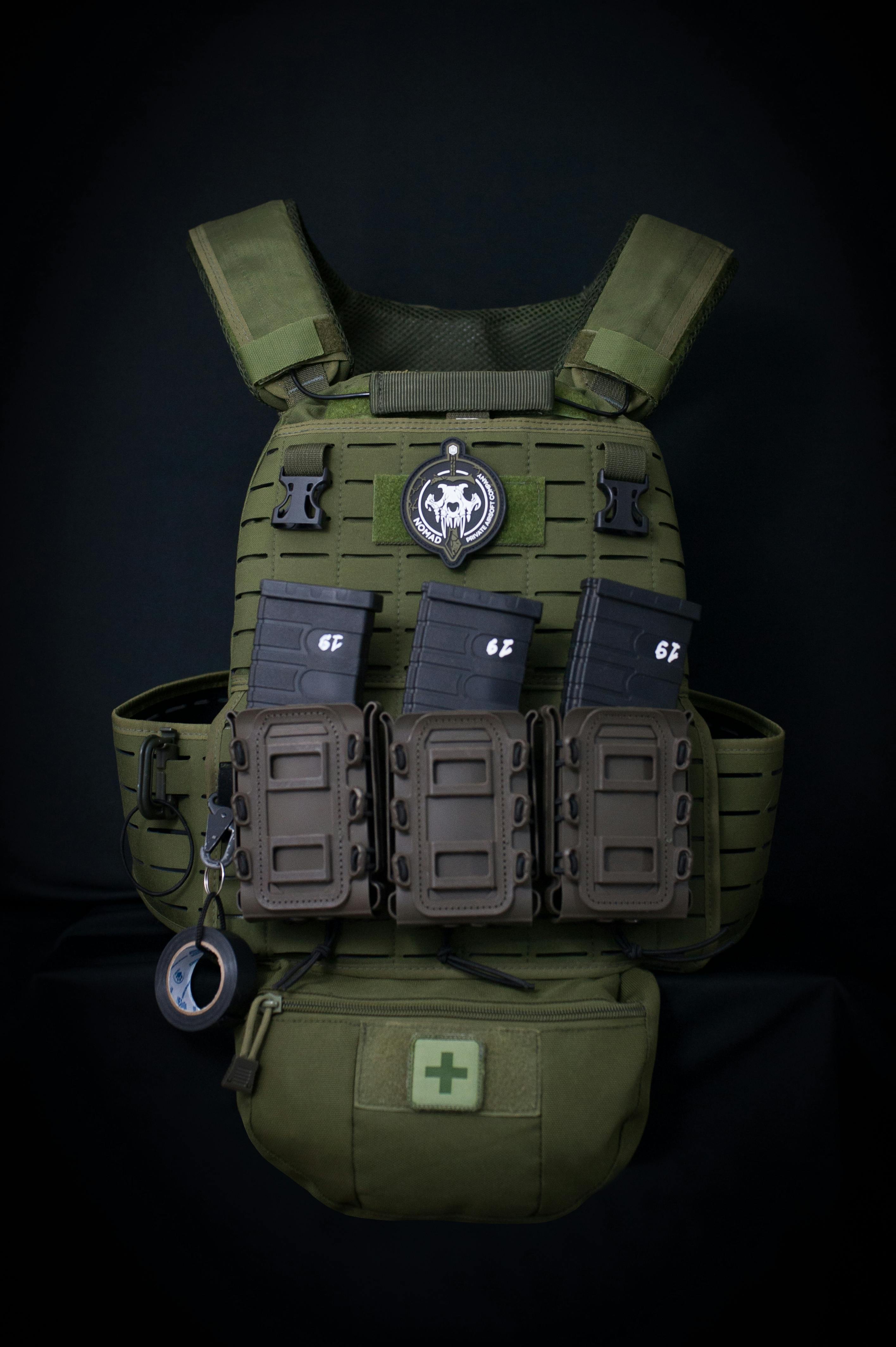
4. **Tactical Vests**: For enthusiasts and professionals needing to carry substantial equipment while keeping hands unencumbered, surplus tactical vests offer an exemplary solution. These vests are highly functional load-bearing systems meticulously designed to enhance efficiency and comfort during demanding activities, transforming cumbersome gear management into a streamlined process.
A defining characteristic is their superior ability to distribute weight uniformly across the wearer’s torso. This ergonomic design is critical for minimizing fatigue, allowing individuals to carry heavy loads over extended durations without undue strain. Strategic weight placement helps maintain balance and reduces the physical toll of rigorous pursuits.
Furthermore, tactical vests are generously appointed with pockets, pouches, and versatile attachment points, like MOLLE webbing. This array of storage provides unparalleled flexibility for organizing and securing tools, personal protective equipment, and communication devices. Everything can be positioned for immediate access, enhancing operational readiness.
Military equipment: Improved Outer Tactical Vest
Name: Improved Outer Tactical Vest
Caption: MultiCam
Origin: United States
Type: Bulletproof vest
Service: 2007–present
UsedBy: Improved Outer Tactical Vest#Users
Wars: War in Afghanistan (2001-2021),Iraq War,Russo-Ukrainian War
DesignDate: Sun Dec 31 2006 16:00:00 GMT-0800 (Pacific Standard Time)
Manufacturer: Point Blank Body Armor, BAE Systems, KDH Defense Systems, Protective Products Enterprises, UNICOR and Creative Apparel Associates
ProductionDate: 2007–present
Variants: Universal Camouflage Pattern ,
Operational Camouflage Pattern (2016–present)
Categories: All articles with dead external links, Articles with dead external links from August 2025, Articles with permanently dead external links, Articles with short description, Ballistic vests
Summary: The Improved Outer Tactical Vest (IOTV) is an enhanced version of, and a replacement for, the older Outer Tactical Vest (OTV) component of the Interceptor multi-threat body armor system, as fielded by the United States Army beginning in the mid-2000s. The IOTV is compatible with the Deltoid and Axillary Protector System (DAPS) components, ESAPI (Enhanced Small Arms Protective Insert), Enhanced Side Ballistic Inserts (ESBI), as well as the OTV’s groin protector. A flame-resistant standalone shirt, the Army Combat Shirt (ACS), was designed in the late 2000s specifically for use with the IOTV.
The OTV design was considered insufficient and lacking in certain areas, which led to the IOTV’s development and fielding beginning in 2007. The IOTV is currently produced by Point Blank Body Armor, BAE Systems, KDH Defense Systems, Protective Products Enterprises, UNICOR and Creative Apparel Associates. The IOTV first saw action in combat with U.S. Army ground combat units in from mid-2007 onward and currently remains the standard body armor type used by regular U.S. Army ground combat units overseas, although the new Modular Scalable Vest is set to replace it in the coming years.
Get more information about: Improved Outer Tactical Vest
Read more about: Unveiling the Shadow Warriors: Inside the Secret World of Navy SEALs and Their Unmatched Legacy

5. **Military Tents**: When discussing dependable outdoor shelter, army surplus tents have rightfully earned a legendary reputation for extraordinary resilience. These shelters withstand severe weather that would shred conventional civilian camping gear, making them preferred for uncompromised protection against nature’s fury, from gale-force winds to torrential downpours.
Many older military tents utilize robust canvas materials. While potentially heavier than contemporary lightweight synthetics, the trade-off is a tent that is virtually indestructible. This heavy-duty fabric provides exceptional resistance to tears, abrasions, and prolonged UV exposure, ensuring a significantly longer service life than most commercial tents.
The remarkable longevity and proven performance of these tents attest to their military-grade design. Many surplus tents have endured decades of rigorous field use and continue to provide steadfast, reliable shelter. Their ability to stand strong offers a clear advantage over products designed with shorter lifespans.
Military equipment: Tent
Categories: All Wikipedia articles needing context, All articles needing additional references, All articles that may contain original research, All articles with unsourced statements, Articles needing additional references from May 2016
Summary: A tent is a shelter consisting of sheets of fabric or other material draped over or attached to a frame of poles or a supporting rope. While smaller tents may be free-standing or attached to the ground, large tents are usually anchored using guy ropes tied to stakes or tent pegs. First used as portable homes by nomads, tents are now more often used for recreational camping and as temporary shelters.
Tents range in size from “bivouac” structures, just big enough for one person to sleep in, up to huge circus tents capable of seating thousands of people. Tents for recreational camping fall into two categories. Tents intended to be carried by backpackers are the smallest and lightest type. Small tents may be sufficiently light that they can be carried for long distances on a touring bicycle, a boat, or when backpacking. The second type are larger, heavier tents which are usually carried in a car or other vehicle. Depending on tent size and the experience of the person or people involved, such tents can usually be assembled (pitched) in between 5 and 25 minutes; disassembly (striking) takes a similar length of time. Some very specialised tents have spring-loaded poles and can be pitched in seconds, but take somewhat longer to strike (take down and pack).
Over the past decade, tents have also been increasingly linked with homelessness crises in the United States, Canada, and other regions. Places of multiple homeless people living in tents closely pitched or plotted near each other are often referred to as tent cities.
Get more information about: Tent
Read more about: Virginia Giuffre’s Family Condemns Mandelson’s Appointment: Unpacking the Epstein Controversy and Demands for Accountability

6. **Surplus Vehicles**: For discerning individuals needing an automotive solution engineered for extreme challenges, military surplus vehicles present an extraordinary opportunity. Machines like Humvees and purpose-built trucks periodically enter the civilian market, primarily through government auctions. These are designed from the ground up to operate flawlessly in the harshest conditions imaginable.
Their foundational design centers on unyielding resilience and unparalleled off-road capability. This results in machines virtually unstoppable in terrains where conventional civilian vehicles would fail. Heavy-duty chassis, formidable powertrains, and specialized suspension are geared towards overcoming monumental obstacles and navigating difficult environments.
Converting these highly specialized military vehicles for civilian road use can be an expensive and intricate undertaking. Such conversions necessitate significant modifications to comply with road safety, emissions standards, and licensing. However, the reward is ownership of a vehicle embodying unparalleled toughness and reliability, a true testament to military engineering.
Military equipment: Leopard 1
IsUk: true
Name: Kampfpanzer Leopard 1
Caption: German Leopard 1A5 at the 2015 Military Day in Uffenheim
Origin: West Germany
Type: Main battle tank
IsVehicle: true
Wars: Bosnian War
Service: 1965–present
Designer: Porsche
Manufacturer: KraussMaffei,OTO Melara
DesignDate: 1956–1961
ProductionDate: 1965–1984
Number: 6,565
—-4,744 main battle tanks,1,741 utility and anti-aircraft vehicles,80 prototypes and pre-series vehicles
Length: 9.54/8.29 m (gun forward/rearward)
Width: cvt
Height: 2.39/2.7 m (turret roof/absolute)
Weight: 42.2 tonnes (increased on later models from original 40 tonnes)
Suspension: Torsion bar
Speed: cvt
VehicleRange: cvt
Armour: cvt,Rolled homogeneous armour
PrimaryArmament: Royal Ordnance L7
SecondaryArmament: MG3
Engine: MTU Friedrichshafen
Crew: 4 (commander, driver, gunner, radio operator/loader)
EnginePower: cvt
PwRatio: cvt
Categories: All articles needing additional references, All articles with unsourced statements, Articles needing additional references from October 2007, Articles with short description, Articles with unsourced statements from August 2025
Summary: The Kampfpanzer Leopard, subsequently Leopard 1 following the introduction of the successive Leopard 2, is a main battle tank designed by Porsche and manufactured by Krauss-Maffei in West Germany, first entering service in 1965. Developed in an era when HEAT warheads were thought to make conventional heavy armour of limited value, the Leopard design focused on effective firepower and mobility instead of heavy protection. It featured moderate armour, only effective against low caliber autocannons and heavy machine guns, giving it a high power-to-weight ratio. This, coupled with a modern suspension and drivetrain, gave the Leopard superior mobility and cross-country performance compared to most other main battle tanks of the era, only being rivaled by the French AMX-30 and Swedish Strv 103. The main armament of the Leopard consisted of a German license-built version of the British Royal Ordnance L7 105 mm rifled gun, one of the most effective and widespread tank guns of the era.
The design started as a collaborative project during the 1950s between West Germany and France, and later joined by Italy, but the partnership ended shortly after and the final design was ordered by the Bundeswehr, with full-scale production starting in 1965. In total, 6,485 Leopard tanks have been built, of which 4,744 were battle tanks and 1,741 were utility and anti-aircraft variants, not including 80 prototypes and pre-series vehicles.
The Leopard quickly became a standard of many European militaries, and eventually served as the main battle tank in over a dozen countries worldwide, with West Germany, Italy and the Netherlands being the largest operators until their retirement. Since 1990, the Leopard 1 has gradually been relegated to secondary roles in most armies. In the German Army, the Leopard 1 was completely phased out in 2003 by the Leopard 2, while Leopard 1-based vehicles are still widely used in utility roles.
The Leopard 2 has replaced the Leopard 1 in service with many other nations, with derived vehicles using the Leopard 1 hull still seeing service. Currently, the largest operators are Greece, with 520 vehicles, Turkey, with 397 vehicles, Brazil with 378 vehicles and Chile with 202 vehicles. Most of these vehicles have been upgraded with various improvements to armour, firepower and sensors to maintain their ability to engage modern threats.
Get more information about: Leopard 1
Read more about: Desperate Dealers? 10 Trucks Drowning in Excess Inventory That Could Be Your Next Steal
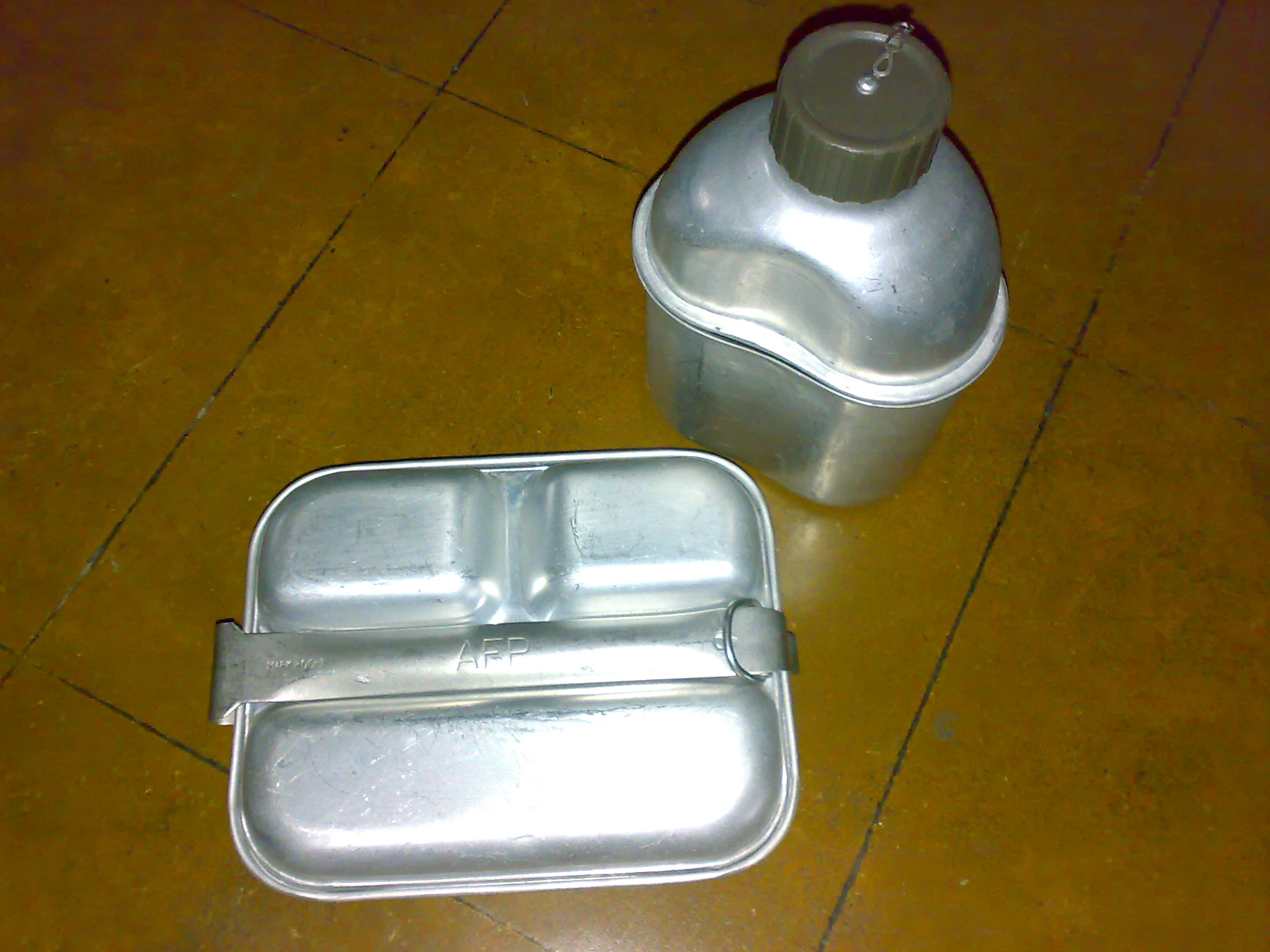
7. **Mess Kits**: The age-old challenge of efficiently preparing and consuming meals in demanding outdoor environments finds its perfect solution in military mess kits. These ingeniously designed kits offer a remarkably lightweight yet exceptionally durable collection of cookware and utensils, engineered to withstand rigorous abuse and constant exposure to elements.
A typical military mess kit is thoughtfully comprehensive, usually including everything an individual needs to prepare and eat meals while camping, hiking, or in survival scenarios. This integrated approach eliminates piecing together kitchen gear, ensuring all essential components are present and work harmoniously, simplifying outdoor dining significantly.
Robust construction, often featuring high-grade aluminum, guarantees these mess kits are tough enough to endure rough handling, direct exposure to open flames, and active field use. Despite their incredible resilience, they remain remarkably light, making them an ideal and practical addition to any backpacker’s loadout where every ounce and bulk matters.
Military equipment: Mess kit
Categories: All articles needing additional references, All articles with dead external links, All articles with unsourced statements, Articles needing additional references from September 2008, Articles with dead external links from January 2025
Summary: A mess kit is a collection of silverware and cookware designed for use by military personnel for food and military rations. They may also be used during camping and backpacking. There are many varieties of mess kits that militaries issue to their personnel that later become available to consumers.
Get more information about: Mess kit
Read more about: Planning on Trouble? The 14 Engines and Models Most Likely to Leave You Stranded Before 100,000 Miles

8. **Sleeping Bags**: In scenarios where extreme cold is potentially fatal, military sleeping bags are meticulously engineered with an uncompromising focus: to preserve the life and warmth of the user. These are advanced thermal insulation systems rigorously designed for survival in conditions where hypothermia is a real and immediate danger.
Many military sleeping bags incorporate innovative modular designs. This provides a significant advantage by enabling users to adapt warmth levels to precisely match environmental conditions. This adaptability means a single core bag system can be configured for mild chills or augmented for deep, sub-zero freezes, offering invaluable versatility.
The empirically proven performance of surplus military sleeping bags makes them exceptionally popular among cold-weather enthusiasts and adventurers. Tested in unforgiving environments, these bags offer reliability and thermal efficiency essential when navigating life-threatening situations, providing critical confidence and warmth for survival.
Military equipment: Sleeping bag
Categories: All articles needing additional references, All articles with unsourced statements, Articles needing additional references from November 2012, Articles with short description, Articles with unsourced statements from July 2009
Summary: A sleeping bag is an insulated covering for a person, essentially a lightweight quilt that can be closed with a zipper or similar means to form a tube, which functions as lightweight, portable bedding in situations where a person is sleeping outdoors (e.g. when camping, hiking, hill walking or climbing). It is also commonly used indoors for people who do not have beds or at sleepovers. Its primary purpose is to provide warmth and thermal insulation through its synthetic or down insulation. It also typically has a water-resistant or water-repellent cover that protects, to some extent, against wind chill and light precipitation, but a tent is usually used in addition to a sleeping bag, as it performs those functions better. The bottom surface also provides some cushioning, but a sleeping pad or camp cot is usually used in addition to that purpose. The bottom surface of a sleeping bag may be moderately water repellent, but a plastic tarp or groundsheet is often used to protect against moist ground.
There are a range of sleeping bag models designed for different purposes. Very lightly insulated sleeping bags are designed for summer camping use or indoor use by children during slumber parties. Well-insulated bags are designed for cold weather use. The most well-insulated and lightweight sleeping bags, which are designed for serious hikers and adventurers, are more expensive than lightly insulated sleeping bags. One subcategory of cold-weather sleeping bags, the mummy bag, is so named because it has an insulated hood for the head. A bivouac sack (bivy) is a waterproof cover for a sleeping bag that may be used in place of a tent by minimalist, experienced hikers. A bivy bag may also be carried by day hikers as a backup or emergency shelter, to be used if they cannot make it back to their starting point by nightfall due to inclement weather or getting lost.
Get more information about: Sleeping bag
Read more about: From Mouseketeers to Megastars: 12 Hollywood Icons Who Became Internet Darlings Thanks to Unexpected Viral Moments

9. Binoculars
Military-grade binoculars are engineered to a significantly higher standard than their civilian counterparts. Their construction and superior optics are designed to endure the extreme rigors of combat, far exceeding the typical demands placed on commercial models. This commitment to robust design ensures they perform reliably when clarity and resilience are paramount.
These optical instruments consistently deliver enhanced low-light performance and a level of durability often unmatched by consumer binoculars, even those costing considerably more. This means clearer vision in dim conditions and a greater capacity to withstand drops, impacts, and exposure to harsh elements without degradation in function. It’s a testament to their military heritage.
From the precise observation needs of bird watchers to the strategic demands of hunters and the meticulous requirements of surveillance professionals, surplus military optics are often the preferred choice. Their proven reliability and exceptional performance provide a distinct advantage, making them an invaluable tool for any application where dependable visual augmentation is critical.
Military equipment: Binoculars
Categories: All articles needing additional references, All articles with unsourced statements, Articles needing additional references from July 2025, Articles with German-language sources (de), Articles with short description
Summary: Binoculars or field glasses are two refracting telescopes mounted side-by-side and aligned to point in the same direction, allowing the viewer to use both eyes (binocular vision) when viewing distant objects. Most binoculars are sized to be held using both hands, although sizes vary widely from opera glasses to large pedestal-mounted military models.
Unlike a (monocular) telescope, binoculars give users a three-dimensional image: each eyepiece presents a slightly different image to each of the viewer’s eyes and the parallax allows the visual cortex to generate an impression of depth.
Get more information about: Binoculars
Read more about: The Iconic Moment Steve Irwin Was Bitten By a Snake on Live TV: An Unforgettable Display of True Wildlife Warrior Cool!
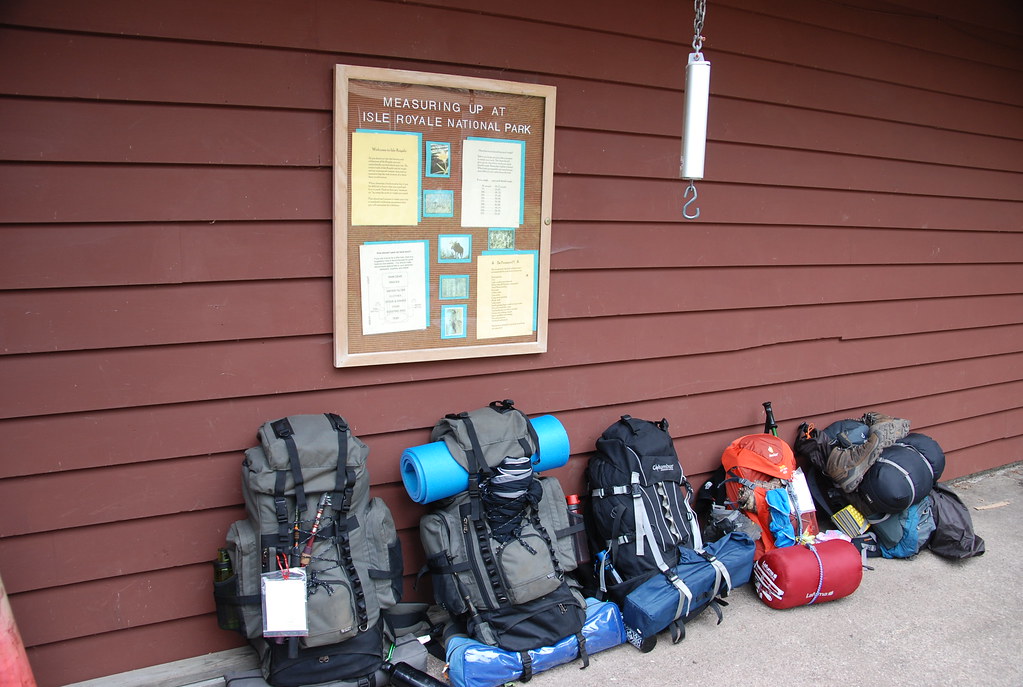
10. Backpacks
For those who demand uncompromising reliability from their gear, military backpacks like the legendary ALICE pack and various tactical rucksacks are engineered masterpieces. They are meticulously designed not merely to carry loads, but to transport heavy burdens over extended distances without any compromise to structural integrity or wearer comfort. Their robust construction resists falling apart under duress.
A key to their exceptional utility lies in sophisticated frame systems and intelligently designed harness configurations. These elements work in concert to distribute weight remarkably efficiently across the wearer’s body, significantly reducing fatigue during prolonged treks. This ergonomic advantage is highly prized by serious hikers and backpackers who understand the importance of efficient load carriage.
Indeed, many seasoned outdoor enthusiasts consistently opt for military surplus packs. They recognize that these packs are fundamentally built to endure the kind of extreme abuse and punishing conditions that would quickly render most civilian outdoor gear unusable. It’s a choice for longevity and unwavering performance in the wild.
Military equipment: Backpack
Categories: 1910s neologisms, Articles with short description, Bags, Camping equipment, Commons link from Wikidata
Summary: A backpack, also called knapsack, schoolbag, rucksack, pack, booksack, bookbag, haversack, packsack, or backsack, is in its simplest frameless form, a fabric sack carried on one’s back and secured with two straps that go over the shoulders; but it can have an external or internal frame, and there are bodypacks.
Backpacks are commonly used by hikers and students, and are often preferred to handbags for carrying heavy loads or carrying any sort of equipment, because of the limited capacity to carry heavy weights for long periods of time with hands.
Large backpacks, used to carry loads over 10 kilograms (22 lb), as well as smaller sports backpacks (e.g. running, cycling, hiking, and hydration), usually offload the largest part (up to about 90%) of their weight onto padded hip belts, leaving the shoulder straps mainly for stabilizing the load. This improves the potential to carry heavy loads, as the hips are stronger than the shoulders, and also increases agility and balance, since the load rides nearer the wearer’s own center of mass.
Get more information about: Backpack
Read more about: Tragedy in the Rockies: An In-Depth Account of Missing Elk Hunters Found Deceased After Extensive Colorado Search

11. Ammunition Boxes
Beyond their original purpose, military ammunition boxes emerge as outstanding storage solutions for a diverse array of civilian items. They offer unparalleled protection for tools, important documents, and sensitive equipment that requires safeguarding against moisture intrusion and physical impact, preserving contents in pristine condition.
Crafted from durable metal, these boxes feature robust, weatherproof seals that form an impenetrable barrier against environmental elements. Their sturdy construction makes them an ideal choice for meticulously organizing cluttered garages, outfitting workshops, or securing vital items within vehicles, ensuring everything remains dry and protected.
The versatility of ammo cans extends to essential emergency preparedness. Many individuals wisely employ them to securely store emergency supplies, ensuring critical items are safe and easily accessible during unforeseen events. They are also perfect for archiving important documents, providing peace of mind against potential damage.
Military equipment: Ammunition box
Categories: Ammunition, Articles with short description, CS1: long volume value, Containers, Short description matches Wikidata
Summary: An ammunition box or cartridge box is a container designed for safe transport and storage of ammunition. It is typically made of metal, wood, and corrugated fiberboard, etc. Boxes are labelled with caliber, quantity, and manufacturing date, lot number, UN dangerous goods labels.
With a metal container, rubber gasket is commonly found in the hinged lid to protect the ammunition from moisture damage. With other containers, plastic bags and desiccants can be used.
The resealing ammunition box is largely a NATO tradition. Warsaw Pact nations typically stored and transported ammunition in single-use “spam cans”. They had crates that had a sealed zinc lining on the inside.
Get more information about: Ammunition box
Read more about: From Big Screen Brawls to TV Triumphs: 15 Legendary Harley-Davidsons That Conquered Hollywood

12. Camouflage Clothing
Military camouflage clothing offers a compelling combination of durability and practical functionality that is often conspicuously absent in much of the civilian outdoor apparel market. These garments are not just about aesthetics; they are purpose-built textiles engineered to perform under demanding field conditions, delivering resilience and utility.
A defining characteristic is that their intricate patterns are genuinely designed to provide effective concealment within natural environments. Unlike purely stylistic civilian imitations, surplus military camouflage is engineered for practical invisibility, allowing wearers to blend seamlessly into their surroundings rather than merely looking “cool.”
This genuine efficacy, coupled with their inherent toughness and often more affordable pricing, makes surplus camo a popular choice. Hunters appreciate the authentic concealment, paintball players benefit from its robust nature, and outdoor workers find the durable fabric and practical design superior to many hunting-specific garments on the market.
Military equipment: List of military clothing camouflage patterns
Categories: All articles lacking reliable references, All articles with dead external links, All articles with failed verification, Articles containing German-language text, Articles lacking reliable references from July 2025
Summary: This is a list of military clothing camouflage patterns used for battledress. Military camouflage is the use of camouflage by armed forces to protect personnel and equipment from observation by enemy forces. Textile patterns for uniforms have multiple functions, including camouflage, identifying friend from foe, and esprit de corps.
The list is organized by pattern; only patterned textiles are shown. It includes current and past issue patterns, with dates; users may include a wide range of military bodies.
Get more information about: List of military clothing camouflage patterns
Read more about: John McQueen: A Legacy Woven from Burrs, Bark, and Vision — Exploring the Life of a Craft Pioneer

13. Medical Supplies
When it comes to emergency preparedness and response, military medical supplies are a class apart. Items such as first aid kits, specialized bandages, and advanced emergency medical equipment are meticulously engineered with one critical objective: to save lives in the most dire and challenging combat situations imaginable.
The rigorous standards under which these supplies are developed mean they frequently surpass civilian medical equipment in both quality and overall effectiveness. This superior design translates into more reliable performance when every second and every component counts, providing a significant advantage in critical care.
Consequently, emergency responders, seasoned outdoor guides, and all preparedness-minded individuals place immense value on surplus military medical gear. Its proven reliability in high-stakes, life-or-death scenarios instills confidence and ensures that critical aid can be administered effectively when it matters most, offering peace of mind in challenging times.
Military equipment: Medical device
Reason: the section related to E.U. needs further updates (esp. in sections 3.2 and 4.2.2) as the directives 93/42/EEC on medical devices and 90/385/EEC on active implantable medical devices have been fully repealed on 26 May 2021 by Regulation (EU) no. 2017/745 (MDR); furthermore, Brexit triggers updates in these sections (U.K. developed their own regulatory framework); but more updates are triggered as also the relation related to the recognition of conformity assessment certificates between the European Union and
Switzerland changed since 26 May 2021
Date: File:Mundspatel.jpg,Image:Baxter Colleague CX infusion pump.JPG,Image:St Jude Medical pacemaker with ruler.jpg
Categories: All Wikipedia articles in need of updating, All articles needing additional references, All articles with unsourced statements, Articles needing additional references from January 2008, Articles needing additional references from June 2022
Summary: A medical device is any device intended to be used for medical purposes. Significant potential for hazards are inherent when using a device for medical purposes and thus medical devices must be proved safe and effective with reasonable assurance before regulating governments allow marketing of the device in their country. As a general rule, as the associated risk of the device increases the amount of testing required to establish safety and efficacy also increases. Further, as associated risk increases the potential benefit to the patient must also increase.
Discovery of what would be considered a medical device by modern standards dates as far back as c. 7000 BC in Baluchistan where Neolithic dentists used flint-tipped drills and bowstrings. Study of archeology and Roman medical literature also indicate that many types of medical devices were in widespread use during the time of ancient Rome. In the United States, it was not until the Federal Food, Drug, and Cosmetic Act (FD&C Act) in 1938 that medical devices were regulated at all. It was not until later in 1976 that the Medical Device Amendments to the FD&C Act established medical device regulation and oversight as we know it today in the United States. Medical device regulation in Europe as we know it today came into effect in 1993 by what is collectively known as the Medical Device Directive (MDD). On May 26, 2017, the Medical Device Regulation (MDR) replaced the MDD.
Medical devices vary in both their intended use and indications for use. Examples range from simple, low-risk devices such as tongue depressors, medical thermometers, disposable gloves, and bedpans to complex, high-risk devices that are implanted and sustain life. Examples of high-risk devices include artificial hearts, pacemakers, joint replacements, and CT scans. The design of medical devices constitutes a major segment of the field of biomedical engineering.
The global medical device market was estimated to be between $220 and US$250 billion in 2013. The United States controls ≈40% of the global market followed by Europe (25%), Japan (15%), and the rest of the world (20%). Although collectively Europe has a larger share, Japan has the second largest country market share. The largest market shares in Europe (in order of market share size) belong to Germany, Italy, France, and the United Kingdom. The rest of the world comprises regions like (in no particular order) Australia, Canada, China, India, and Iran.
Get more information about: Medical device
Read more about: Echoes from the Deep: Chronicling America’s Most Devastating Naval Losses of World War II

14. Water Purification Systems
In any environment where access to safe drinking water is compromised, military water purification systems represent a critical asset. These sophisticated units are specifically designed to transform contaminated water sources, rendering them potable and safe for consumption, thereby eliminating a major survival concern.
Their engineering allows them to effectively process a wide spectrum of compromised water. Whether confronting muddy river water teeming with sediment or tackling sources that are chemically contaminated, these systems are built to perform, ensuring a reliable supply of clean water even in the most challenging conditions.
For serious campers, intrepid hikers, and dedicated emergency preparedness enthusiasts, surplus military water purification equipment is an indispensable tool. Their unwavering reliance stems from the fact that these systems have been exhaustively tested and proven in real-world, life-threatening conditions where the consequence of failure is simply not an option.
Military equipment: Nanotechnology for water purification
Categories: All articles with style issues, Articles with Spanish-language sources (es), Drinking water, Nanomaterials, Nanotechnology and the environment
Summary: There are many water purifiers available in the market which use different techniques like boiling, filtration, distillation, chlorination, sedimentation and oxidation. Currently nanotechnology plays a vital role in water purification techniques. Nanotechnology is the process of manipulating atoms on a nanoscale. In nanotechnology, nanomembranes are used with the purpose of softening the water and removal of contaminants such as physical, biological and chemical contaminants. There are a variety of techniques in nanotechnology which uses nanoparticles for providing safe drinking water with a high level of effectiveness. Some techniques have become commercialized.
For better water purification or treatment processes nanotechnology is preferred. Many different types of nanomaterials or nanoparticles are used in water treatment processes. Nanotechnology is useful in regards to remediation, desalination, filtration, purification and water treatment.
The main features that make nanoparticles effective for water treatment are
More surface area
Small volume
The higher the surface area and volume, the particles become stronger, more stable and durable
Materials may change electrical, optical, physical, chemical, or biological properties at the nano level
Makes chemical and biological reactions easier
Current commercial water purifiers using nanotechnology include the LifeSaver bottle, Lifesaver Jerrycan, Lifesaver Cube, Nanoceram, and NanoH2O.
Get more information about: Nanotechnology for water purification
Read more about: Unearthing the Secrets: A Deep Dive into the World of Rare-Earth Elements and Their Unseen Impact
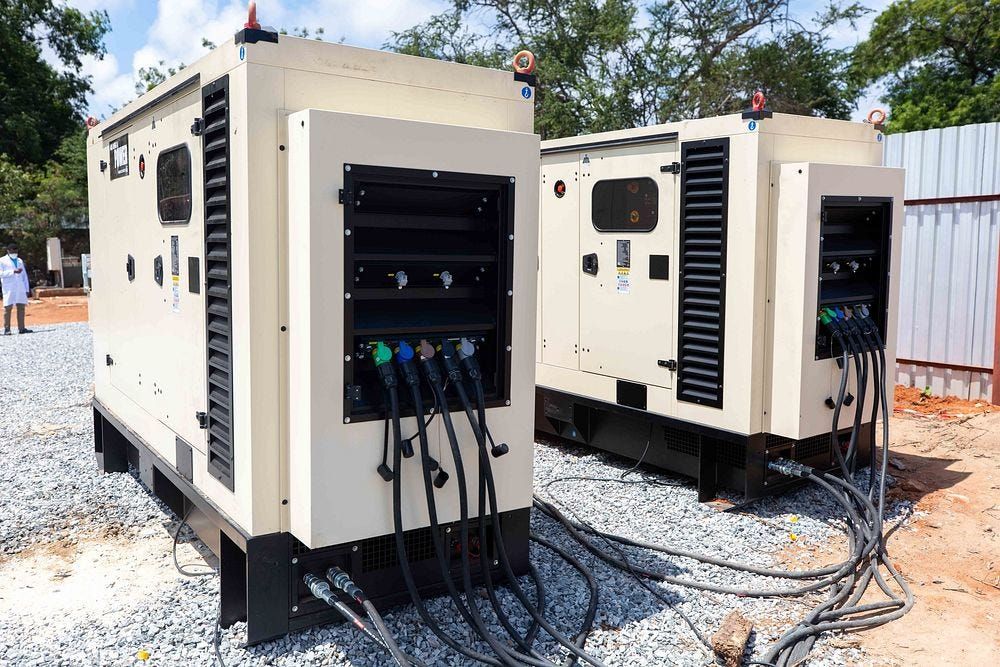
15. Generators
For those requiring a power solution that can withstand the harshest operating environments, military generators offer an extraordinary level of reliability. These robust units are purpose-built to provide consistent electrical output in hostile conditions where standard civilian equipment would quickly falter or cease to function entirely.
A hallmark of military generators is their ruggedized construction, designed to absorb significant abuse and continue operating flawlessly. Furthermore, many models possess the critical capability to run efficiently on various fuel types, offering invaluable flexibility in situations where specific fuels might be scarce or difficult to procure.
This combination of extreme durability and versatile fuel compatibility makes surplus military generators a popular choice among professionals and enthusiasts alike. Construction workers depend on them for remote job sites, emergency responders rely on them during critical incidents, and off-grid enthusiasts value their unwavering performance in demanding, isolated conditions.
Military equipment: Generator
Categories: All article disambiguation pages, All disambiguation pages, Disambiguation pages, Short description is different from Wikidata
Summary: Generator may refer to:
Signal generator, electronic devices that generate repeating or non-repeating electronic signals
Electric generator, a device that converts mechanical energy to electrical energy.
Tidal stream generator, a machine that extracts energy from moving masses of water
Generator (circuit theory), an element in an abstract circuit providing a source of electricity
Engine-generator, an electric generator with its own engine
Wearable generator, a hypothetical generator that can be worn on the human body
Gas generator a device, often similar to a solid rocket or a liquid rocket that burns to produce large volumes of relatively cool gas
Motor–generator, a device for converting electrical power to another form
Atmospheric water generator, a device capable of extracting water from air
Get more information about: Generator
Read more about: Mark Cuban’s Ultimate Playbook: 14 Passive Income Streams Billionaires Use to Build Lasting Wealth
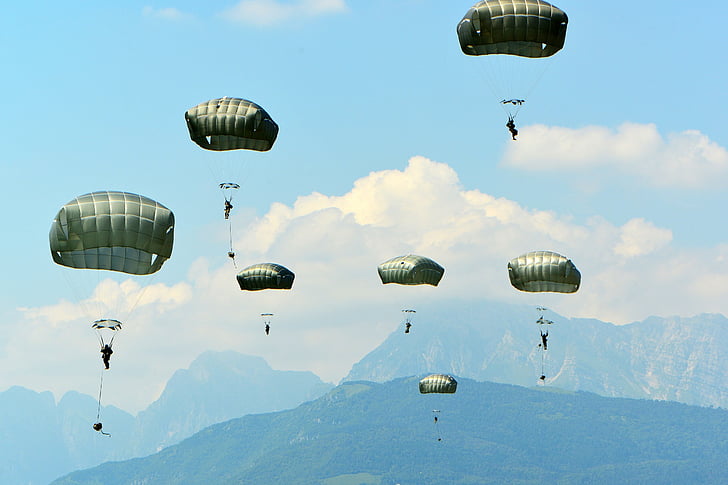
16. Parachutes
The acquisition of surplus parachutes by civilians opens up a fascinating array of possibilities, extending beyond their original military purpose. These meticulously crafted aerial devices can be obtained for recreational skydiving, integrated into comprehensive emergency preparedness strategies, or even creatively repurposed for textile projects utilizing their high-quality silk fabric.
Military parachutes are subjected to an incredibly stringent regimen of safety standards and undergo exhaustive, rigorous testing throughout their design and production. This uncompromising approach ensures that every parachute is engineered to perform perfectly, providing an absolute guarantee of reliability in life-critical situations.
It is precisely this dedication to extreme safety and proven performance that leads many civilian skydivers to actively prefer surplus military chutes. Knowing that their equipment has been battle-tested and designed for unwavering reliability in life-or-death situations provides an unparalleled level of confidence when taking to the skies.
**Concluding Remarks**
Military equipment: Parachute
Categories: Airborne military equipment, All Wikipedia articles in need of updating, All articles needing additional references, All articles needing expert attention, All articles with unsourced statements
Summary: A parachute is a device designed to slow an object’s descent through an atmosphere by creating drag or aerodynamic lift. It is primarily used to safely support people exiting aircraft at height, but also serves various purposes like slowing cargo, aiding in space capsule recovery on Earth, landing spacecraft on other planets, and stabilizing vehicles or objects. Modern parachutes are typically made from durable fabrics like nylon and come in various shapes, such as dome-shaped, rectangular, and inverted domes, depending on their specific function.
The concept of the parachute dates back to ancient attempts at flight. In AD 852, Armen Firman, in Córdoba, Spain, made the first recorded jump with a large cloak to slow his fall. Renaissance figures like Francesco di Giorgio Martini and Leonardo da Vinci later sketched designs resembling modern parachutes, but it was not until the 18th century that the first successful jumps occurred. French Louis-Sébastien Lenormand made the first public jump in 1783, and he coined the term “parachute” in 1785. In the following years, key advancements were made by figures like André Garnerin, with parachutes becoming lighter, more reliable, and easier to deploy.
By the time of World War I, parachutes had become essential for aviators, and significant improvements were made to their designs, including the introduction of the backpack-style parachute by Charles Broadwick and Gleb Kotelnikov’s knapsack parachute. After World War II, parachuting became a popular sport, and new materials like nylon replaced silk. Today, parachutes are used in military, recreational, and emergency situations, continuing to evolve with advances in technology and design.
Get more information about: Parachute
Read more about: Unveiling the Edge: An In-Depth Look at History’s Most Dangerous Movie Stunts and Their Enduring Legacy
Military surplus gear undeniably occupies a distinct category of its own, characterized by an absolute intolerance for failure. This equipment is forged under testing conditions that would frankly make most civilian gear manufacturers blanch, a testament to its singular design philosophy. Every item is conceived by engineers who grasp that when your very survival hinges on your equipment, there is simply no room for compromise, cutting corners, or the concept of planned obsolescence. While it is true that some surplus items might not boast the latest “bells and whistles” of contemporary civilian alternatives, their enduring durability more than compensates, often outlasting generations. For discerning individuals who prioritize unshakeable quality and steadfast performance over fleeting flashiness, military surplus offers a direct pathway to equipment that has been rigorously proven in the most demanding fields imaginable, where performance genuinely matters most.

